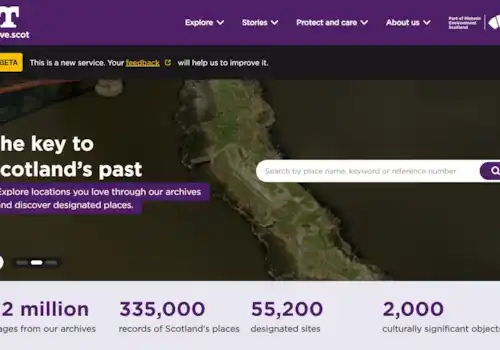03 July 2024
|
Cheddar Man DNA? Viking DNA? Romanov DNA? Royal DNA? Discover how history and pre-history are being reinterpreted in the light of DNA investigations. Family Tree magazine UK reports
Learn more about our shared human story and your deep ancestry with Ancient DNA. Dr Diane Brook shares useful further reading links below, and we share her writing on the New Grange burial in Ireland and the way in which DNA is now proving ancient Irish history.
Find Dr Diane Brook's full article in the August issue of Family Tree
"Archaeologists have long wondered if tombs which held many burials (where still untouched until modern times) were tombs of the whole community, an elite, or one kindred,” writes Dr Diane Brook, in the forthcoming August issue of Family Tree. “Ancient DNA is starting to answer these questions,” continues Diane.
“The Hazleton long barrow in Gloucestershire, excavated in 1979-82, held 35 burials. The DNA now shows that there was one man with four wives and their children and grandchildren with others the partners of the children. Each wife and her descendants were in a separate area of the tomb. In this case, an elite single family were provided with this huge monument, in use for only about a hundred years from 3700 to 3600 BCE.
"Another study, of chamber tombs in Ireland, from 3900 to 2500 BCE, showed smaller, simpler tombs did not contain related people between different sites. They major tombs, far apart, did have related male burials, two in Sligo, and one each in Meath and Down, strongly suggesting a powerful elite. Most interesting is the New Grange burial, about 3200 BCE of the man in the most special position just to the side of the passage end, by the carved stones where the mid-winter sun hits.
"His DNA showed he was the product of incest; parent-child or brother-sister. This is usual only in royal elites such as the Pharoahs and Hawaiian royalty. Three ancient Irish stories refer to incest in royal families and events involving Newgrange. It is hard to believe this is continuous tradition but I would love to think Irish ancient 'history' treating as mythology, has some basis in fact."
Pushing back the boundaries of pre-history, in the August 2024 issue of Family Tree Diane Brook takes the long view, combining her interests in archaeology and genealogy to piece together an account of our shared human past as revealed by artefacts, remains and DNA.
Useful links and websites for learning about Ancient DNA
Find Dr Brook’s references, to accompany her article, below.
Learn about ancient DNA for genealogy in the August issue: buy your copy here
Timeline
See https://en.wikipedia.org/wiki/Timeline_of_prehistory
References
Finding Historical People: The identification of the Romanovs: Can we (finally) put the controversies to rest? https://journals.plos.org/plosone/article?id=10.1371/journal.pone.0004838
Richard III and DNA: https://www.nature.com/articles/ncomms6631#article-info
Digging up the Ancestors?: https://www.nature.com/articles/s43586-020-00011-0
Vikings: Ancient DNA reveals insights into Viking diaspora, British Archaeology, Sept Oct 2019, 7. https://www.biorxiv.org/content/10.1101/703405v1
Welsh and English: The Anglo-Saxon migration and the formation of the early English gene pool | Nature
Romans in Britain: https://www.museumoflondon.org.uk/discover/ancient-dna-written-bone, https://www.nature.com/articles/ncomms10326
When did Britain become ‘Celtic’?: The Great Bronze Age migration, British Archaeology, May June 2022, 18-25. Large-scale migration into Britain during the Middle to Late Bronze Age | Nature
Bronze Age traits: https://theconversation.com/ancient-dna-reveals-how-europeans-developed-light-skin-and-lactose-tolerance-43078
Invasions or Continuity? Beaker People and Yamnaya: Was Beaker invasion greatest of all?, British Archaeology, July August 2017, 6, Mike Pitts. How ancient DNA is changing the way we think about prehistoric Britain, British Archaeology, May June 2018, 14-19. Ian Armit & David Reich. "The Beaker phenomenon & the genomic transformation of northwest Europe," Nature (2018), https://www.nature.com/articles/nature25738. Book before ancient DNA studies suggested same pattern: The Horse, The Wheel and Language, David W Anthony, Princeton, 2007.
Neolithic: Meet the Hazeltons, British Archaeology, May June 2022, 38-45. A high-resolution picture of kinship practices in an Early Neolithic tomb | Nature
Ancient Irish: Ancient DNA in Ireland: isolation, immigration and elite incest, British Archaeology, Sept 0ct 2020, 32-41, Lara Cassidy. Myths with royal incest and Newgrange: Newgrange and inbreeding: three ancient myths (irishcentral.com)
Cheddar Man: https://www.nhm.ac.uk/discover/cheddar-man-mesolithic-britain-blue-eyed-boy.html
Ancient Hunters: Palaeogenomics of Upper Palaeolithic to Neolithic European hunter-gatherers | Nature
Neanderthal: Neanderthal genetics - Wikipedia
Genealogy sites offering Ancient DNA comparisons:
23&Me (paid test) – Neanderthal. www.23andme.com
LivingDNA (paid test) – Viking, Classical, Neanderthal, Denisovan. www.livingdna.com
FamilyTreeDNA (paid tests) – ancient European groups, WHG, EEF, Yamnaya. www.familytreedna.com
Gedmatch (free site, registration required) – Archaic DNA matches, free tool. www.gedmatch.com
Y-DNA Haplogroups and Haplotrees
SNP Tracker - http://scaledinnovation.com/gg/snpTracker.html
FamilyTreeDNA Public Haplotree - https://www.familytreedna.com/public/y-dna-haplotree/A
International Society of Genetic Genealogy - https://isogg.org/tree/
Wikipedia - https://en.wikipedia.org/wiki/Human_Y-chromosome_DNA_haplogroup
Mt-DNA
https://www.mdpi.com/2073-4409/8/5/433
All the Humans:
https://en.wikipedia.org/wiki/Archaic_humans
And Our Friends:
Dogs: oldest but neglected friends under scrutiny, British Archaeology, July August 2019, 7. Ancient dog DNA Ancient dog DNA reveals 11,000 years of canine evolution (nature.com)
Books:
Who We Are and How We Got Here, David Reich, Oxford University Press, 2018.
My European Family, the First 54,000 Years, Karin Bojs, Bloomsbury Sigma, 2017.








